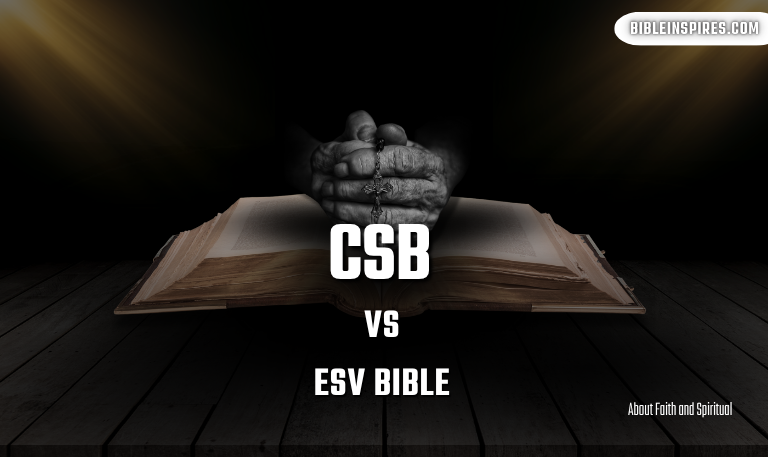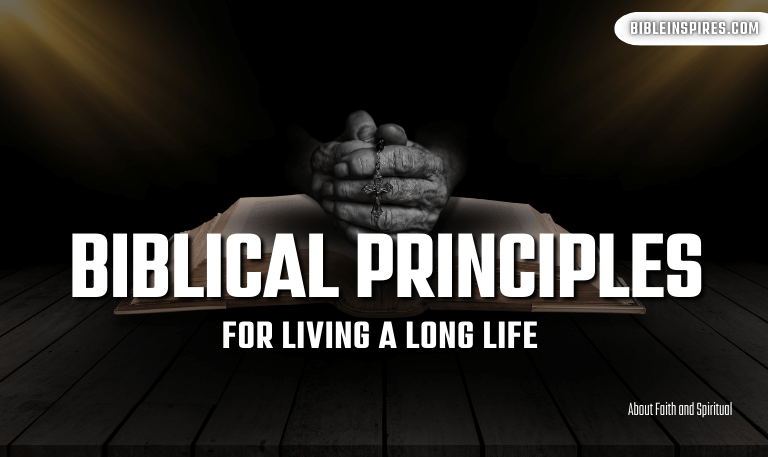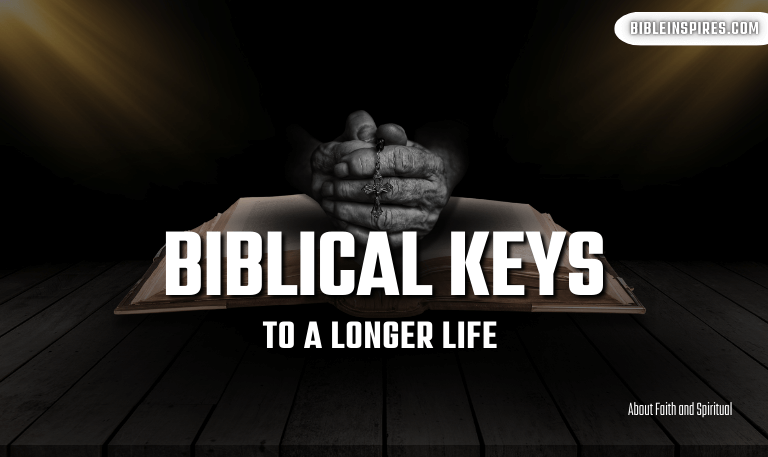Choosing the right Bible translation is crucial for personal study, devotion, or teaching. Among the most widely used translations today are the CSB (Christian Standard Bible) and the ESV (English Standard Version). Both of these versions have earned significant popularity, but they differ in their translation philosophies, readability, textual accuracy, and theological nuances. In this comprehensive guide, we’ll delve deep into a CSB vs ESV Bible comparison, analyzing each translation’s strengths and weaknesses, the target audience for each, and how they differ in terms of readability, accuracy, and theological emphasis.
I. Introduction to CSB and ESV
What is the CSB Bible?
The Christian Standard Bible (CSB) was introduced in 2017 as an update to the Holman Christian Standard Bible (HCSB). The goal was to create a translation that balances accuracy and readability, making it suitable for both personal devotions and scholarly study.
History and Development: The CSB was produced by the Holman Bible Publishers and was a project led by a team of scholars and translators from various Christian denominations.
Purpose and Target Audience: The CSB aims to serve a wide audience, from casual readers to seminary students. It strives for a translation that is faithful to the original languages while still being easily understood by modern readers.
Read Also: How Tall Was Jesus Christ
What is the ESV Bible?
The English Standard Version (ESV), published by Crossway in 2001, is based on the Revised Standard Version (RSV) and is renowned for its literal approach to translation, prioritizing word-for-word accuracy. It has become widely accepted in evangelical circles for personal study, preaching, and teaching.
History and Development: The ESV was developed by a team of biblical scholars with a focus on faithfulness to the original texts, aiming to provide a modern English translation with the closest possible adherence to the Hebrew and Greek manuscripts.
Purpose and Target Audience: The ESV is geared toward readers who value precision and clarity, especially those involved in theological study and scriptural preaching.
II. Translation Philosophy and Approach
CSB Translation Philosophy: Dynamic Equivalence with Accuracy
The CSB uses a translation philosophy known as dynamic equivalence, which aims for meaning-based rather than word-for-word translation. This allows the CSB to read more smoothly and naturally in English while retaining the core message of the original texts.
Target Audience: Primarily intended for readers who seek both accuracy and readability. Ideal for devotional reading and general study.
Textual Approach: While striving for accuracy, the CSB often chooses readability over an exact word-for-word translation, making it accessible to a broader audience.
ESV Translation Philosophy: Formal Equivalence with Precision
The ESV, on the other hand, adheres more strictly to formal equivalence, translating words and phrases as literally as possible from the original languages.
Target Audience: The ESV is well-suited for readers who prioritize scholarly precision, theological study, and in-depth Bible study.
Textual Approach: The ESV attempts to preserve the structure, wording, and idiomatic expressions of the original texts. While this results in a more formal tone, it provides an authoritative and academically rigorous translation.
Read Also: Sending Prayers Your Way Quotes
Comparison of Translation Approaches
| Aspect | CSB | ESV |
|---|---|---|
| Philosophy | Dynamic Equivalence | Formal Equivalence |
| Readability | Easier to read and understand for most readers | More rigid and formal, requiring deeper engagement |
| Accuracy | Balances accuracy with readability | Emphasizes precision and literal translation |
| Ideal for | Devotional reading, general study | In-depth study, scholarly work |
III. Readability and Accessibility
CSB: Readability and Accessibility for the Modern Reader
One of the primary selling points of the CSB is its emphasis on readability. By using modern English phrasing and a more conversational style, the CSB is designed for easy understanding, even for readers with little to no background in biblical languages.
Sentence Structure: The CSB tends to use shorter sentences and simpler vocabulary to make the text more accessible.
Ease of Use: This makes the CSB an excellent choice for new believers, those studying the Bible casually, or people who simply want a version of the Bible they can read comfortably.
ESV: Depth and Accuracy with Traditional Readability
While the ESV is more formal and less conversational, it still strives for readability without sacrificing textual accuracy. It is a solid choice for those who want a serious study Bible while still being readable enough for daily use.
Sentence Structure: The ESV tends to preserve the original syntax, which can sometimes make the reading experience feel more complex and less fluid than the CSB.
Ideal for Deep Study: It’s especially useful for those engaged in sermon preparation, theological study, or Bible memorization.
IV. Textual Accuracy and Faithfulness to the Original Texts
CSB: Faithful Yet Readable
The CSB aims to faithfully represent the original languages while remaining accessible. However, due to its dynamic equivalence philosophy, certain passages may be interpreted more loosely in order to prioritize understanding.
Strengths: The CSB is faithful to the general meaning of the original text while making compromises for easier comprehension.
Weaknesses: Some critics argue that in an attempt to be more readable, the CSB sacrifices word-for-word accuracy in favor of meaning-based translation.
ESV: Precision and Literalism
The ESV is known for its commitment to literal accuracy, which means that it often mirrors the exact wording of the Hebrew, Aramaic, and Greek manuscripts.
Strengths: This makes the ESV an ideal choice for scholars and those looking for a translation that closely reflects the original biblical languages.
Weaknesses: The strict adherence to word-for-word translation can sometimes lead to awkward phrasing or hard-to-understand sentences for casual readers.
V. Theological Considerations: CSB vs ESV
CSB’s Theological Position
The CSB’s translation decisions often reflect a moderate evangelical perspective, balancing traditional views with modern sensibilities. It is well-suited for contemporary evangelicalism and is seen as the preferred version for churches, Bible study groups, and devotional reading.
Read Also: Bible Verses About Thieves and Liars
ESV’s Theological Position
The ESV is generally considered to have a conservative theological bent, with its translation team emphasizing doctrinal precision. It’s widely accepted in Reformed and evangelical circles and is often preferred for preaching, sermon preparation, and academic study.
Comparison: Theological Implications
| Aspect | CSB | ESV |
|---|---|---|
| Theological Bias | Moderately evangelical, widely accepted | Conservative, more doctrinally rigid |
| Translation Choices | More readable, with slight theological adjustments for clarity | Very precise and faithful to original manuscripts |
| Use in Denominations | Popular in evangelical and Baptist circles | Widely used in Reformed, Presbyterian, and evangelical settings |
VI. Popularity and Usage in Christian Communities
CSB: A Modern Choice for Evangelicals
Since its release, the CSB has gained significant traction in evangelical communities. Churches, Bible study groups, and individuals looking for a more readable translation have adopted it as their preferred version.
ESV: The Go-To Translation for Serious Study
The ESV has long been favored by scholars, theologians, and churches focused on word-for-word study. Its extensive use in seminaries, academic settings, and Reformed churches speaks to its credibility and precision.
VII. Key Verse Comparison: CSB vs ESV
Let’s compare some of the most well-known Bible verses between the CSB and ESV to highlight the differences in translation.
Example 1: John 3:16
CSB: “For God loved the world in this way: He gave His one and only Son, so that everyone who believes in Him will not perish but have eternal life.”
ESV: “For God so loved the world, that he gave his only Son, that whoever believes in him should not perish but have eternal life.”
Analysis:
The CSB uses “in this way”, making the text slightly more contemporary and accessible.
The ESV sticks closely to “so loved”, reflecting the traditional phrasing of older translations.
Example 2: Romans 8:28
CSB: “We know that all things work together for the good of those who love God, who are called according to His purpose.”
ESV: “And we know that for those who love God all things work together for good, for those who are called according to his purpose.”
Analysis:
The CSB arranges the sentence with a modern flow, making it easier to understand in everyday language.
The ESV sticks to the traditional word order and maintains a slightly more formal tone.
VIII. CSB vs ESV: Pros and Cons
CSB Pros:
More readable and accessible for casual readers.
Ideal for devotional reading and family Bible study.
Modern, conversational tone without compromising theological depth.
CSB Cons:
Some may argue it sacrifices accuracy for readability in certain passages.
Less preferred for in-depth scholarly study compared to the ESV.
Read Also: Deadly Sins in the Bible
ESV Pros:
Highly accurate with a word-for-word translation.
Preferred for academic study, sermons, and theological discussions.
Faithful to the original texts, making it highly suitable for deep study.
ESV Cons:
Less readable for casual or new readers.
More formal tone may make it challenging for some readers to engage with the text.
CSB vs ESV Bible FAQs
Q: Which is better for Bible study: CSB or ESV?
A: If you’re looking for ease of reading, the CSB may be a better choice. For deep study and academic purposes, the ESV is often the preferred translation.
Q: Is the CSB a good translation for new believers?
A: Yes! The CSB is designed to be accessible and easy to understand, making it ideal for those new to the faith or the Bible.
Q: Does the ESV use modern English?
A: While the ESV uses contemporary English, it is more formal compared to the CSB, as it focuses on literal translation.
Conclusion
In the debate between CSB vs ESV, the right translation depends on your needs and how you intend to use the Bible. If you’re looking for clarity and ease of reading, the CSB is a strong choice. If you prioritize accuracy and theological depth in your study or teaching, the ESV may be the better option.
Ultimately, both translations have their merits, and many Christians find value in using both depending on the context. Understanding the distinctions will help you make a more informed decision for your Bible study and spiritual journey.

![How to Forgive According to the Bible [2025 Guide] 3 How-to-Forgive-According-to-the-Bible-[2025-Guide]](https://bibleinspires.com/wp-content/uploads/2025/04/How-to-Forgive-According-to-the-Bible-2025-Guide.png)

